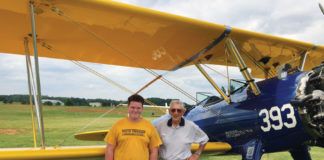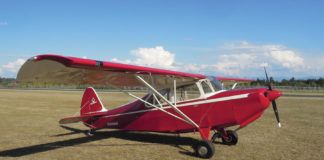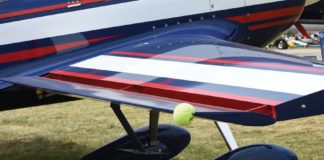There are a few marquee-style events that happen every year that—to one extent or another—feature sport aviation or ultralights. Of course there is AirVenture in Oshkosh, Wisconsin; Sun ’n Fun in Lakeland, Florida; Sport Aviation Expo in Sebring, Florida; Aero in Friedrichshafen, Germany; and a handful of others. They are all great, and I try to make it to all of them, and more, over the course of the year (except for Friedrichshafen so far—Bucket List). Most of those events have the advantage of offering a variety of aircraft and activities for people to enjoy. They are also consistent. You know, for example, that AirVenture happens in Oshkosh, and you know years ahead of time what the dates will be.
But what about if you are a purist? What if ultralights, gyroplanes, trikes or powered parachutes are what you like? What if you want to see pilots really make the aircraft fly instead of just looking at them on the ground? After all, if you are a music lover, odds are you’d rather go to a concert than a musical instrument store, right? And if you were a good musician, wouldn’t you like your chance to get up on stage and show people what you’ve got instead of just letting somebody look at your guitar? Well, the answer is competition flying. And if you want to see, or compete with, the best, international competition flying is where it’s at.
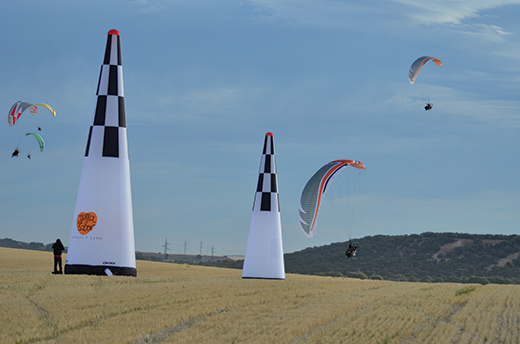
The sky normally stayed full of aircraft flying or staging for each task at the competition.
Every year, the International Air Sports Federation (FAI) holds a variety of competition events, and sadly (but luckily for a few!), they aren’t generally well attended by the public, flying or otherwise. They normally end up being insider events with competitors and their national teams, judges and few other people making up the whole event. This certainly isn’t by design, though; guests are always welcome. But because so few guests attend many of these things, you get almost unprecedented access to some of the best pilots in the world. You can see what the best fly, how they fly and how they stack up against the rest of the best. And you can visit with them afterward at dinner or over a drink. If you don’t watch out, you can even be recruited to help judge the action!
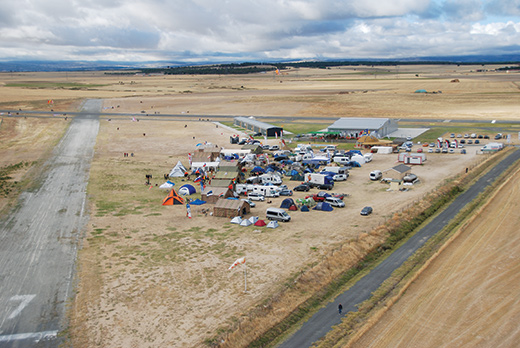
Maybe it’s not as high end as the Olympic Village, but the airport became an international community for two weeks.
Marugán, Segovia, Spain
The problem I experienced most often with attending the World Paramotor Championship (WPC) 2012 was explaining to people where I was going. When you tell people that you are going to Spain, they know about Madrid and Barcelona. But with fewer than 700 inhabitants, the town of Marugán, located about an hour and a half northwest of Madrid, is a little less well known.
It was a great place to hold an aviation competition, because not only is Marugán small, it is also isolated and equipped with a wonderful airport that a town of any size would be proud to have. It had great facilities, including a restaurant and a swimming pool. By isolated, I mean lots of open farmland for people to fly over without bothering anyone.
One of the great things about international championships is that they are rarely held in the same location twice, which meant that the Spanish championship promised to be a lot different from the last championship, held in the Czech Republic in 2009.
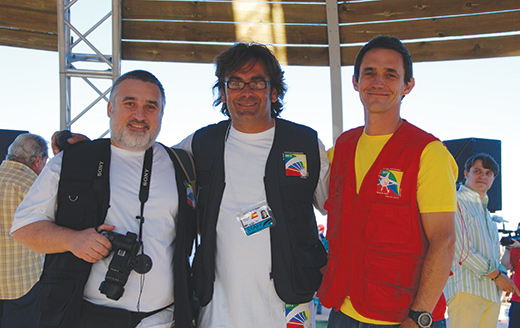
The brain trust for the event (l to r): Chief Scorer José Luis Esteban, Competition Director Nino Muelas and Deputy Competition Director Antonio Marchesi.
The Journey
My trip started almost a year ago, when I volunteered to be a member of the jury or a steward for the WPC 2012. Those are both positions that are selected by the Microlight and Paramotor Commission (CIMA) of FAI, which is headquartered in Switzerland. I had a feeling that it would be a good trip since I knew some of the people organizing the event, and the Spanish really have a good reputation for putting on solid championships. However, I wasn’t quite prepared for the news that I would be president of the jury for the championship. After all, my only previous experience was being a steward for the 2005 World Microlight Championship in Levroux, France. That was years ago and a lot less responsibility.
It seems my qualifications stood out: I was a native English speaker, I had worked with many of the CIMA members in the past, and (importantly) I volunteered. I really did feel both honored and a little concerned. After all, it is a big deal. A lot of people would be working for a couple of years to make sure the championship would occur. If things weren’t done properly, I would be in the awkward position of explaining the problems and demanding resolutions. Then again, I remembered that it was the Spanish taking on the task of organizing. When I remembered that, I felt much better.
My plane landed in Madrid, and I was met by the event organizer, María Jesús Jiménez or “Chus.” Despite all of her other responsibilities, she had the job of meeting me early and transporting me to Marugán. Language was a little bit of a challenge because she spoke great Spanish, and I spoke sketchy English. But she treated me to my first canned coffee at a service station. The can had a heating element built right into it. It was good, but not a lot there. I had forgotten that European coffee is low in quantity and high in caffeine.
Anyway, we were off and running to Marugán. Crossing the mountains, we actually passed through a couple of different climates in the hour-and-a-half trip west. When we finally got close, the land looked as dry as the drought conditions I left in the Midwest. But here, that was how it is supposed to look. This was wheat and cattle country. The dryness reminded me of the summer drive in central California from Los Angeles to San Francisco. Only during this drive, the sparse architecture was stonework—and old. Many of the buildings, ruins and stone fences were older than the U.S.
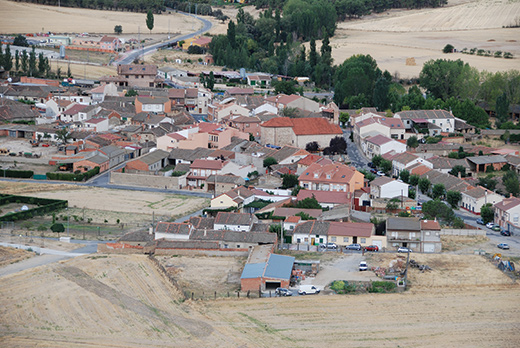
The host town of Marugán, Spain.
The Airport
The airport in Marugán was built for microlights and was a great location both for the World Paramotor Championships and for the World Microlight Championships, which were held only a week or so earlier. The good news is that the staff and the venue got a good trial run with the microlight crowd. Paramotors, which outnumber microlight competitors nowadays, would really test the facility. And everything worked great, except for the Internet—isolation does have its price.
The airport was built with recreational pilots in mind. The T-hangars all seemed to come equipped with a loft, complete with running water. You could easily come out for a weekend and sleep right above your airplane. There wasn’t room for a kitchen, but that was what the airport bar and restaurant were for.
The main hangar had one side that was built for business, with separate outside entrances for five commercial areas. Two were used for the bar/restaurant and a third was used for the main office for the championship. One of the 10 T-hangars was set aside for the event staff with a central area for the marshals to meet and do their work with competitors, and the upstairs was reserved for competition management and scoring.
Camping, porta-potties, portable shower facilities and parking were all very well planned and convenient. One of the fun things about these events is that each of the countries has a designated camping area. National flags were prominent and you could easily tell which country’s area was which from a distance. The British used not only the tents provided, but with a lot of personal sleeping tents, became one of the larger compounds at the airport. Other teams, such as the South Africans, chose to sleep at a hotel in town and mostly leave their equipment in the provided tents.
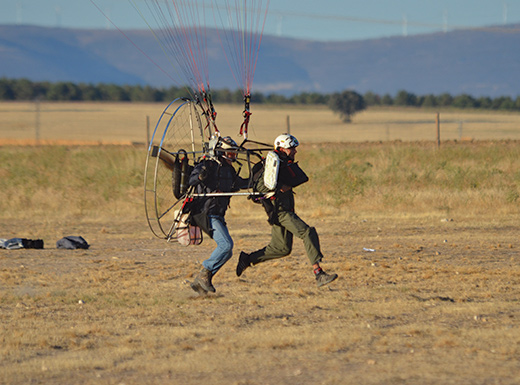
The most athletic of the participants had to be the two-place foot-launch competitors. Just getting airborne was a challenge on calm days.
Airtime!
When I worked in Levroux, I never got a chance to fly over France. This time, I got an offer from the Paramania team to fly in a one-off powered parachute with a Polini engine and a Paramania taxi wing. I was impressed with how the wing performed, considering the two people, the relatively low-powered engine (at least compared to U.S. carts) and the high density altitude. The wing was the same one used for the Skycar project and was capable of producing a range of airspeeds from 15-50 mph. Like most European machines, it had hand steering, which seems like a lot of extra work.
But just getting a para-eye view of the area was the best part of the flight. Pilots were in a practice session flying around some pylons, a new feature. They are very functional, making it obvious where the turn points are for precision tasks. Both pilots and judges have no doubt about whether someone is flying the circuit properly. But a pleasant side effect is that it is also entertaining for the public to watch. Ah, if only there had been a public!
The flight and the tour were great, the view was awesome, and the opportunity to fly something new, someplace new was incredible. Once the event began, there was no more practice or free flying.
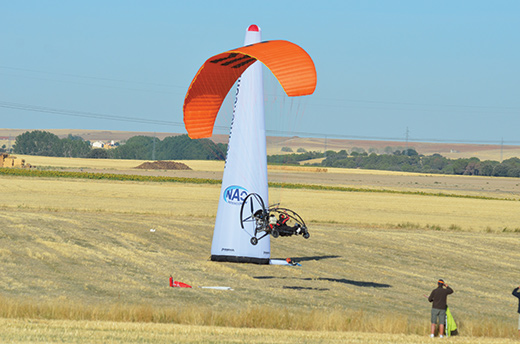
The two-seat Xcitor makes a turn around the inflated pylons.
Competition
You may wonder what kinds of competitions occur in a Paramotor World Championship. It really isn’t that much of a race, if that is what you are thinking. It is more a test of pilot skills. Much of the competition did entail time-measured tasks, but not all. Tasks were divided into precision, navigation and economy categories, with some tasks measuring sets of skills. It is easy to combine something like a precision landing with a cross-country task, and that was also done.
As mentioned, the precision tasks were very visual and were actually what most U.S. pilots like best. There were also more tasks of that ilk, as Europeans prefer them, too. Precision tasks could be takeoff, landing or flying tasks using the pylons. A fun one that I hadn’t seen before was called bowling. A line of five brightly colored, soft, 4-foot sticks were set up in a row in the landing area. The idea was for the pilot to shut the engine off and perform a dead-stick landing with the goal of knocking down as many of the foam sticks as possible. Sound easy? Well, if you touch the ground before you hit a stick, that stick didn’t count, even if you ran or rolled over it. Plenty of people scored five sticks, and plenty more scored zero. It was challenging!
Visually, the best events were timed around the inflated pylons. That is where you would see pilots really slice up some air. A kicking stick in the center of the pylons would start the timer, and the pilot would have to weave a specific circle around the sticks while coming back to the center of the task area and kick the stick again. The timing was electronic and was the same equipment used for downhill ski races and other Olympic-style events. They even had a digital display that announced the score for the winners.
Efficiency tasks were also pretty visual because so many paracraft would be in the sky at the same time. Before the task, pilots would empty their fuel tanks and actually run their engines dry in front of the judges. Then the competitors would each be allowed the same measured amount of fuel and the paramotors would be placed in a quarantine area. When the event window opened, pilots could take off whenever they wanted and stay up as long as they could. It was a task where light pilots, light equipment and efficient wings had a natural advantage. But there was another rule in play. The pilots had to fly the same equipment during this task that they flew in all of the other tasks. No changing equipment on a task-by-task basis. The pilots who did well with the free-flying task were those who, well, did a lot of free flying—that is, without engines. Some of them started as free-fliers and graduated to power and had a lot of practice in their past.
Navigation tasks were not as colorful as the other categories of competition, but there was still some drama. First, realize that championship events do not allow niceties like GPS, flight computers, radios or even cell phones. All flight planning is expected to be old school, and the event was certainly expected to flow au natural. Pilots could fly with their GPS, phone and whatnot, but only to be used for emergencies. The gadgets would have to first be brought to the judging station, where they would be sealed up in pouches. If the seal was broken, or if the pilot failed to come back to the station and show off their still-sealed pouch, they would be disqualified from the event.
In past championship events, technology and teamwork combined to allow pilots to prepare in ways that weren’t allowed this time. The cross-country task would be briefed the day before, and pilots would take the information back to their camp and get ready for the next day’s flying. That meant that one smart guy at the camp would usually do all of the flight planning for the entire nation’s team. Then everyone would stay up late at night pre-flying the task on Google Earth.
This year, the competition didn’t brief the cross-country details until right before the event. Better, the pilots would have to go into a quarantine area without all of the fun gadgets and do their flight planning right on site. Not only that, they were only allotted a set amount of time, and there were penalties for those who went over that time. It was a little like study hall in that pilots couldn’t talk with each other or with anyone outside the quarantine area. It was intense. It was also interesting to see how much planning gear would make it into the quarantine area. By the end of the competition, desks, chairs, scissors, tape and all kinds of non-electronic (and completely legal) gear would be carried into the quarantine area and left there until after the flying task was completed. It was a great idea on the part of the organizers.
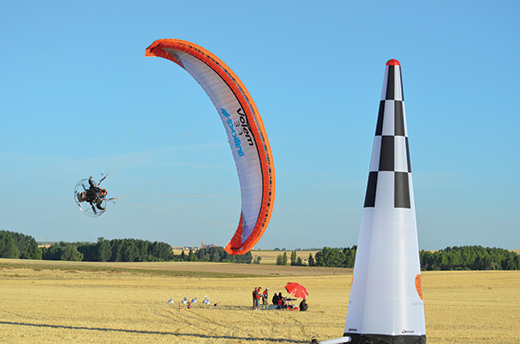
Tight turns were expected from single-place foot-launch participants.
Winners
As in the Olympics, gold, silver and bronze medals were presented to individual winners and winning nation teams. Categories included foot-launch single-place, foot-launch tandem, foot-launch single-place (female), wheeled single-place and wheeled tandems. With individual and team awards, that made for a lot of medals. (I know: One of my official duties before the start of the competition was to inventory them all.)
And as they do at the Olympics, the winning athletes at the World Paramotor Championship put their all into the competition. You can see the list of winners at http://wpc2012.microlight.es.
Where Are the Americans?
I was asked this question by competitors at least as many times as I was asked back home where Marugán is. Sadly, as far as I could tell, I was only one of two people from the Western Hemisphere at the event. I was the only one not living in Europe. Europe, Africa and Asia all fielded teams, and the U.S. was missed by many. More importantly, American pilots missed out on a chance to meet new friends and enjoy new adventures. But of course, there will be the next World Paramotor Championship in two years.
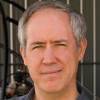
![]()
Roy Beisswenger is the technical editor for Powered Sport Flying magazine (www.psfmagazine.com) and host of the Powered Sport Flying Radio Show (www.psfradio.com). He is also a Light Sport repairman and gold seal flight instructor for Light Sport Aircraft as well as the United States delegate to CIMA, the committee of the Fédération Aéronautique Internationale (FAI) pertaining to microlight activity around the world.

